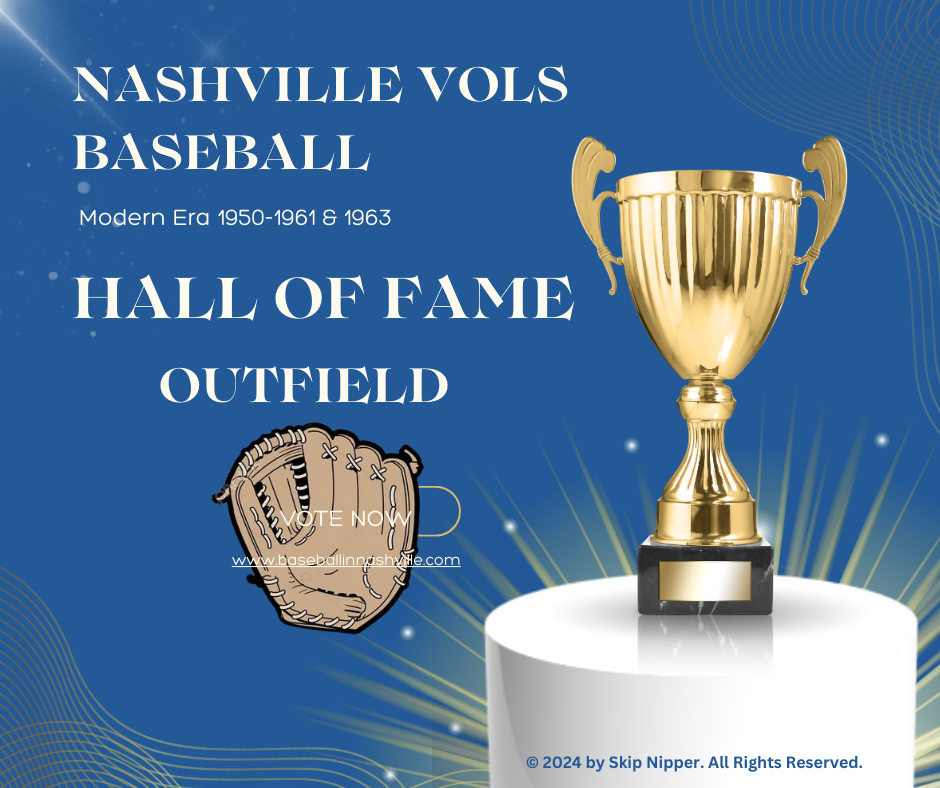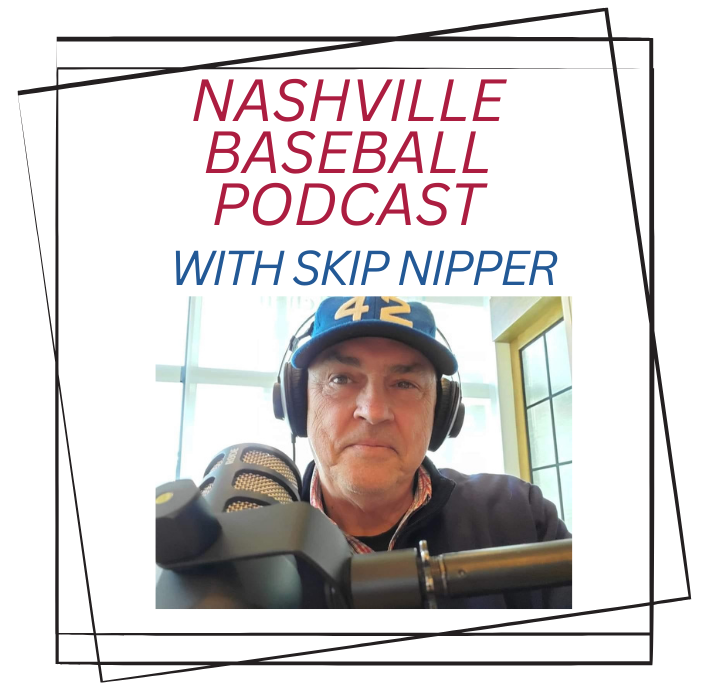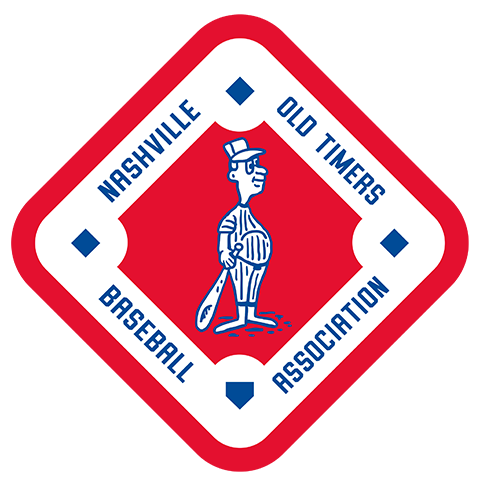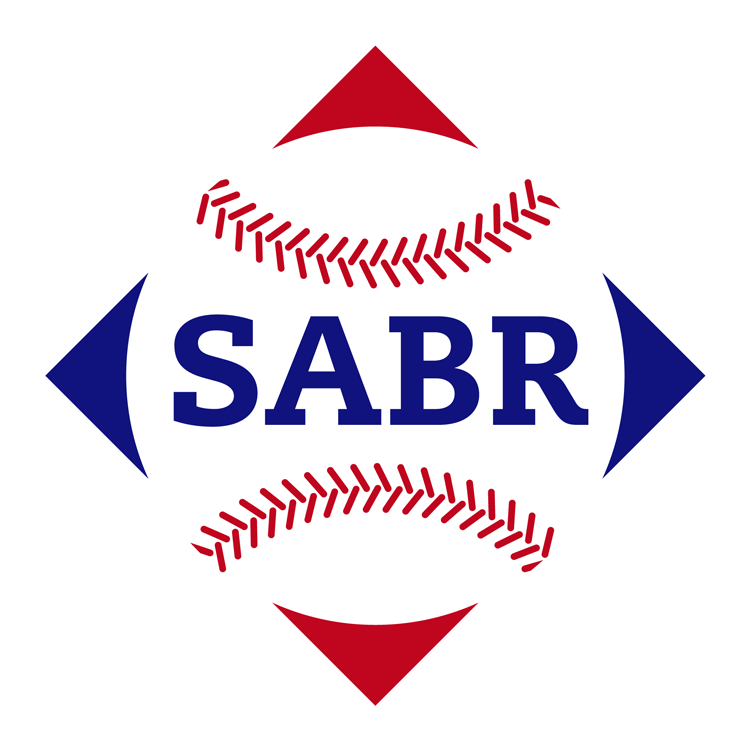
Note: the bios for each player have been moved to the bottom of this page.
Thomas White “Tommy” Neill (November 7, 1919 – September 22, 1980) was born in Hartselle, Alabama. In 1946 Neill led the Southern Association in hits (207), batting average (.374) and runs batted in (124) with the Birmingham Barons. In 1949 with Nashville, he came in second in the batting race, finishing with an average of .3460 — just .0004 behind Pat Haggerty. After the 1951 season with Los Angeles in the PCL, Neill returned to Nashville for the first part of the year. Neil spent 15 years in professional baseball, retiring after the 1954 season. He died in Houston, Texas, at the age of 60.
1950: 182 hits, 13 home runs, 111 RBIS, .346 batting average / Fielding: 245 chances, 1 errors, .996 fielding %
Paul William Mauldin (May 4, 1923 – October 1, 2010) was a graduate of Atlanta’s Commercial High, entered the Navy and served as a World War II gunner’s mate. He went from the military to baseball, playing in the outfield for the Chattanooga Lookouts, Hopkinsville Hoppers, Macon Peaches, and Ottawa Giants. He came to Nashville for two seasons beginning in 1949. After retiring from baseball, Mauldin became a firefighter in Atlanta, rising to the rank of captain.
1950: 126 hits, 14 home runs, 88 RBIS, .268 batting average / Fielding: 332 chances, 14 errors, .953 fielding %
Charlie “Bama” Ray (February 23, 1920 – October 6, 2004) was born in Jemison, Alabama. He was a member of the Nashville Vols for four seasons beginning in 1949. His best season was in 1951 when he hit for a .338 average. He played 14 seasons in the minor leagues beginning in 1939 and retired after a final season with Augusta in the South Atlantic (SALLY) League in 1953.
1950: 124 hits, 10 home runs, 59 RBIS, .289 batting average / Fielding: 271 chances, 3 errors, .989 fielding %
1951: 187 hits, 18 home runs, 83 RBIS, .338 batting average / Fielding: 360 chances, 14 errors, .961 fielding %
1952: 159 hits, 18 home runs, 70 RBIS, .303 batting average / Fielding: 279 chances, 9 errors, .968 fielding %
Theodore “Ted” Lotz (May 5, 1928 – November 9, 1986) was born in Warren, Ohio. He began his pro career in the Chicago Cubs organization, first in Elizabethton (TN) in the Appalachian League. He split the 1950 season between Des Moines and Sioux Falls before being sent to Nashville for one season. Lutz retired in 1953 after seven seasons in the minors. He was a graduate of Ohio University in Athens, Ohio. Upon retiring, Lotz became a housewares sales representative and made his home in Overland Park, Kansas.
1951: 92 hits, 11 home runs, 60 RBIS, .254 batting average / Fielding: 212 chances, 9 errors, .958 fielding %
Herbert Paul “Babe” Barna (March 2, 1915 – May 18, 1972) was born in Clarksburg, West Virginia and attended West Virginia University. In 15 seasons in the minors, he had a .311 career batting average. Before coming to Nashville in 1949 for two seasons (he played for Baltimore in the International League in 1950 before returning to Nashville for 1951), he spent six years with Minneapolis in the American Association. He won the Southern Association batting crown in 1951 season in Nashville He was inducted into the West Virginia University Sports Hall of Fame in 1996. Barna died in Charleston, West Virginia, at the age of 57.
1951: 157 hits, 19 home runs, 94 RBIS, .358 batting average / Fielding: 171 chances, 6 errors, .965 fielding %
Harvey William “Bill” Gentry (May 27, 1926 – July 1, 2018) played for ten years in the minor leagues, from 1947 through 1956; three of those seasons were at the Triple-A level with Ottawa and Minneapolis. He made the Giants’ roster at the outset of the 1954 season after a strong 1953 campaign with Double-A Nashville. He appeared in five games, all as a pinch hitter. His best season at the plate was at Fort Smith (AR) in the Western Association when hit .315; A native of Winston-Salem, North Carolina, he died on July 1, 2018, at the age of 92.
1953: 106 hits, 24 home runs, 73 RBIS, .266 batting average / Fielding: 194 chances, 6 errors, .969 fielding %
Robert Albert “Bob” Lennon (September 15, 1928 – June 14, 2005), also nicknamed “Archie”, was born in Brooklyn, New York. Although Lennon struggled at the Major League level in three different trials during the mid-1950s, he was a prolific home run hitter in minor league baseball in a 16-year career. He won the Southern Association Triple Crown with Nashville in 1954 also led in runs scored (139). As a minor leaguer, he batted .281 in 1,784 games, with 1,699 hits and 1,067 RBIS to go with his 278 four-baggers. Lennon retired after the 1961 season and died at age 76 in Dix Hills, New York.
1953: 106 hits, 24 home runs, 73 RBIS, .266 batting average / Fielding: 194 chances, 6 errors, .969 fielding %
1954: 210 hits, 64 home runs, 161 RBIS, .345 batting average / Fielding: 433 chances, 18 errors, .958 fielding %
William Michael “Bill” Taylor (December 30, 1929 – September 15, 2011) was born in Alhambra, California, and was an outfielder for the New York Giants and Detroit Tigers. He spent most of the 1953 season with Nashville when he led the league in batting average. Taylor also played for Navegantes del Magallanes of the Venezuelan Winter League where he set two records while playing with Magallanes in the 1953–1954 season; he became the first player in the league’s history to hit three home runs in a single game, and for setting a new season mark with 16 home runs. Taylor died on September 15, 2011, in Antelope Valley, California.
1953: 142 hits, 22 home runs, 93 RBIS, .350 batting average / Fielding: 168 chances, 7 errors, .958 fielding %
Arthur Howard “Artie” Dunham (born March 21, 1929) was born in Woodbridge, New Jersey, and had a 10-year career in minor league baseball as a New York Giants farmhand beginning in 1948 with Sanford (FL) in the Florida State League. After a stint with Erie (PA) in 1949 and Enid (OK) in 1050, he served in the U.S. Army for two years, returning to baseball in 1953. Dunham played one season in Nashville in 1954 after splitting the previous season with Wilkes-Barre in the Eastern League and Sious City in the Western League. He left baseball after playing for Dallas, Louisville, and Houston at the AAA level, retiring after the 1959 season.
1954: 127 hits, 10 home runs, 53 RBIS, .280 batting average / Fielding: 245 chances, 4 errors, .984 fielding %
Eric Chapman Rodin (February 5, 1930 – January 4, 1991) was born in Orange, New Jersey, and attended the University of Pennsylvania. Rodin was recalled by the Giants after his season with the Nashville Vols in 1954 and appeared as a pinch hitter. During his nine-year, 953-game minor league career, Rodin batted .300 with 117 home runs, including two seasons with Little Rock in the Southern Association. Rodin retired after the 1960 season.
1955: 159 hits, 18 home runs, 83 RBIS, .336 batting average / Fielding: 223 chances, 7 errors, .969 fielding %
Robert Sydney “Bob” “Hurricane” Hazle (December 9, 1930 – April 25, 1992) was born in Laurens, South Carolina. He appeared in 110 games in the major leagues with the Reds, Braves, and Tigers. Sent to Wichita by Milwaukee in 1957, in August he batted .473 with five home runs and 19 RBISs. His sudden and unexpected burst of offense earned him the nickname “Hurricane” (Hurricane Hazel had killed hundreds of people in North America in 1954.) After a stint in the minors, including Nashville in 1955 where he led the Southern Association with 114 runs scored and 29 home runs, he finished his career with Birmingham and Little Rock in 1960 when he retired. Hazle died in Columbia, South Carolina at the age of 61.
1955: 189 hits, 29 home runs, 92 RBIS, .314 batting average / Fielding: 417 chances, 9 errors, .947 fielding %
Benjamin Earle “Ben” Downs (August 13, 1929 – October 7, 2001) was born in Highland Park, Michigan. He attended Northern High School where he played basketball and baseball. He served in the military for 8 ½ months in 1951 after spending three seasons in the minors, returning in 1952 as a member of the Fresno Cardinals. In the opening game of the season Downs hit three home runs against San Jose. He spent one season in Nashville in 1955 but returned to the Southern Association with Little Rock in 1957, Little Rock and Atlanta in 1958, and Memphis in 1959 before retiring from baseball.
1955: 179 hits, 12 home runs, 108 RBIS, .340 batting average / Fielding: 246 chances, 13 errors, .947 fielding %
Barbra O’Neil “Neil” Chrisley (December 16, 1931 – May 18, 2013) was a native of Calhoun Falls, South Carolina, where he graduated from high school. He attended Newberry College. He had a five-year major league career with Washington, Detroit, and Milwaukee after six seasons n the minors, including Nashville in 1955. He played his final game on September 24, 1961, with the Braves. Following the 1961 season he was sold to the newly organized New York Mets. However, he was returned to the Braves’ organization without ever playing for the Mets, although a 1962 Topps baseball card was produced. He died in Conway (SC) at the age of 81.
1955: 179 hits, 12 home runs, 108 RBIS, .340 batting average / Fielding: 277 chances, 8 errors, .971 fielding %
Ralph Martin “Country” Brown (June 1, 1921 – December 24, 1996) was born in Lafayette, Georgia. In 1946, at the age of twenty-five, he signed with the Tampa (Florida) Smokers, but in 1948 became a member of the Atlanta Crackers. He remained with the ball club through 1952 until being traded to Chattanooga. He was a member of the Lookouts the next season, split 1954 between Birmingham and Little Rock, and was with Birmingham another season before joining Nashville in 1956. His last season was in Louisville in 1957 before he retired.
1957: 170 hits, 14 home runs, 78 RBIS, .308 batting average / Fielding: 319 chances, 18 errors, .944 fielding %
George Edward Schmees (September 6, 1924 – October 30, 1998) appeared in Major League Baseball for the St. Louis Browns and Boston Red Sox during the 1952 season. His baseball career began in 1946 at Ogden, Utah, in the Pioneer League, but by 1949, was a member of the AAA Montreal Royals. He later played in the PCL before joining the Nashville Vols in 1956 for three seasons. On June 23, 1958, after hitting a grand-slam in the first game of a double header and a three-run homer in the second game, Schmees was told he had been sold to Salt Lake City. At the end of the season he retired. Born in Cincinnati, Schmees died in San Jose, California, at the age of 74.
1956: 152 hits, 22 home runs, 100 RBIS, .307 batting average / Fielding: 290 chances, 13 errors, .955 fielding %
1957: 153 hits, 17 home runs, 112 RBIS, .287 batting average / Fielding: 284 chances, 7 errors, .975 fielding %
Stanley Francis “Stan” Palys (May 1, 1930 – February 8, 2021) was born in Blakely, Pennsylvania. He appeared in 138 games over all or parts of four seasons in the majors, from 1953 through 1956, for the Philadelphia Phillies and Cincinnati Redlegs. He joined Nashville in 1957, leading the league in batting average and runs scored (116), and returned to the Southern Association with Birmingham in 1960 and 1961. Palys completed his professional career with four seasons (1964–67) in Nippon Professional Baseball, belting 66 home runs in 446 total games, including 25 during 1965. He died at the age of 90.
1957: 177 hits, 24 home runs, 112 RBIS, .359 batting average / Fielding: 263 chances, 8 errors, .970 fielding %
Drew Edward “Buddy” Gilbert (born July 26, 1935) was born in Knoxville, Tennessee, where he still resides. He attended Knoxville’s Central High School and the University of Tennessee. He signed with Cincinnati in 1954 and played eight seasons in the Reds’ farm system, through 1961. Gilbert played for three seasons with Nashville, leading the league in 1958 with 118 walks and 128 strikeouts in 1958, and strikeouts in 1959 with 123. After retiring from baseball, Gilbert launched a successful banking and real estate career in his hometown. He is a member of the Greater Knoxville Sports Hall of Fame.
1958: 119 hits, 27 home runs, 85 RBIS, .247 batting average / Fielding: 438 chances, 9 errors, .979 fielding %
1959: 142 hits, 24 home runs, 84 RBIS, .282 batting average / Fielding: 404 chances, 5 errors, .988 fielding %
1961: 101 hits, 15 home runs, 77 RBIS, .251 batting average / Fielding: 289 chances, 11 errors, .962 fielding %
James Riley “Jim” “Big Jim” Fridley (September 6, 1924 – February 28, 2003) was born in Phillipi, West Virginia. After finishing high school, Fridley worked briefly for the FBI and later served in the U.S. Army for four years during World War II. Following his service discharge, he attended West Virginia University on a football scholarship, playing both for the WVU baseball and football teams. He was signed by the Cleveland Indians as a free agent in 1948. He played 10 years in organized ball before reporting to the Nashville Vols for one season in 1958, and for two more seasons played for Houston in the American Association and Victoria in the Texas League. Fridley retired after returning to the Southern Association with Mobile and Little Rock in 1961. He died in Port Charlotte, Florida, at age 78.
1958: hits, 179 home runs, 101 RBIS, .348 batting average / Fielding: 261 chances, 14 errors, .946 fielding %
Ultus Álvarez “Chico” Suárez (May 2, 1933 – August 6, 2010) was born in Cuba and played 13 seasons in the minor leagues from 1952 to 1964. He played in six games with Nashville in 1955 after spending most of the season in Columbia (SC) in the South Atlantic (SALLY) League, returning to Nashville for the 1959 and 1960 season. He was a Southern Association All-Star in 1959 although he suffered a shoulder injury in late August and was unable to finish the season; he still led the league in triples with 12. In 1960, he led the Southern Association in strikeouts with 119. Alvarez hit .278 with 142 home runs and 1,417 hits in 12 minor league seasons, never reaching the majors.
1959: 150 hits, 15 home runs, 87 RBIS, .290 batting average / Fielding: 254 chances, 7 errors, .972 fielding %
1960: 155 hits, 15 home runs, 69 RBIS, .290 batting average / Fielding: 327 chances, 14 errors, .957 fielding %
Everette “Ev” Joyner, Jr. (September 9, 1926 – December 23, 2017) was born in Mt. Pleasant, Mississippi and graduated from Marshall County Agriculture High School Slayden (MS) in 1944. He served two years in the U. S. Marines before signing with the St. Louis Cardinals and played for the West Frankfort (IL) Cardinals in the Mississippi-Ohio League where he batted .322. In subsequent seasons he played at Allentown (PA), Coumbus (OH), Columbus (GA), Shreveport (LA), Wichita (KS), Atlanta, Omaha, Houston, and Dallas before finishing his career with two final two seasons in Nashville. He became a Sheriff’s Department Captain for 26 years in Shreveport. He died at the age of 91.
1961: 162 hits, 5 home runs, 78 RBIS, .308 batting average / Fielding: 230 chances, 4 errors, .983 fielding %
Joseph Lawrence “Joe” “Little Joe” Christian (May 9, 1931 – January 24, 1984) was born in Moon Run, Pennsylvania, and attended Robinson Township High School. He spent his first two seasons of pro ball at Harlan, Kentucky in the Mountain States League beginning in 1949 before being sent to Ventura (CA) for part of 1951 and Evansville in the III League to finish the season. For most of his career he was with the Braves organization, but in 1958 was sent by the Cardinals to Rochester for two seasons; the Senators’ farm club in Charleston was his next stop in 1960 before playing in Nashville’s final Southern Association season in 1961. On August 16, he collected four doubles and a triple in a game against Macon, one of only seven players in the 61-year history of the Southern Association to hit four doubles in one game and ties a record for extra-base hits in a single game with five. After six more years, he retired. His best season had been at Harlan in 1950 when he batted .346.
1961: 183 hits, 9 home runs, 85 RBIS, .336 batting average / Fielding: 287, chances, 8 errors, .972 fielding %
Frank Dennis Waite (August 5, 1941 – June 22, 1998) was born in Wagarville, Alabama. He played six years of minor league baseball beginning in 1959 with Daytona Beach in the Florida State League. Subsequent stops included Winston-Salem in 1960, Lancaster (PA) in 1961, Portsmouth-Norfolk in 1962, and Nashville in 1963. It was the final season for the Vols as the club folded at the end of the season. In 1964, Waite joined the Tulsa Oilers in the Texas League. He passed away in Tupelo, Mississippi at the age of 56.
1963: 81 hits, 18 home runs, 59 RBIS, .217 batting average / Fielding: 188 chances, 10 errors, .947 fielding %
You may still vote for the other infield positions in the “Recent Posts” section above!
© 2024 by Skip Nipper. All Rights Reserved.



